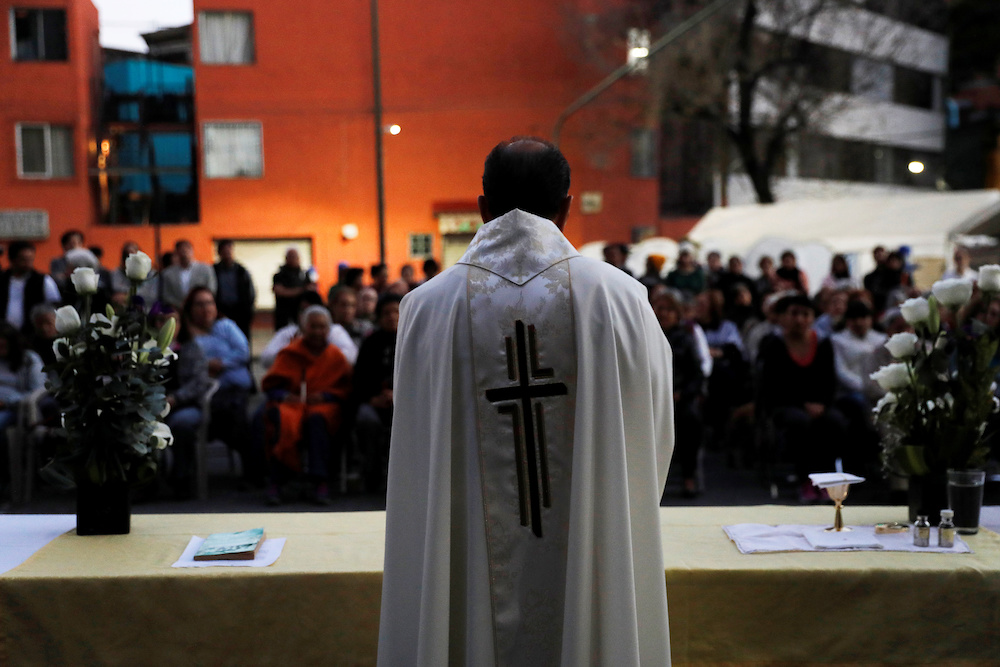ROSARIO, Argentina – For a long time, American Catholics will remember summer as the anniversary of the 2018 clerical abuse debacle, with the Pennsylvania Grand Jury report detailing abuses by hundreds of priests as well as the initial allegations against Theodore McCarrick.
Both were important and deserve to be remembered.
McCarrick, once a powerful American cardinal, today a lay man found guilty by the Vatican of sexually abusing minors, showcases that much still needs to be done in the Church to clean its hierarchy.
How did a man with two settlements for having abused seminarians make it all the way to the College of Cardinals, and stay there for so long?
That question and many others remain unanswered, and they will be until the Vatican releases a long-promised report into his rise up the ladder. Though there’s no date for release, a person who saw a draft back in early 2019 acknowledged they’d “broken down and cried” despite having worked on abuse prevention in the Church for over a decade.
The Pennsylvania report showed that there are still many victims and survivors who haven’t yet come forth, either because they’re too afraid to speak out or because they think it’ll amount to nothing. As a direct result of that report, hundreds have dared to go to authorities, potentially see justice done — and lead to the removal of predators from the priesthood.
Yet the summer months of 2020 have also seen three signs of hope emerging from Latin America – where, of course, it’s actually winter.
The challenges facing the Church in the region are mammoth. An estimated 40 percent of the cases of clerical sexual abuse currently before the Vatican’s Congregation for the Doctrine of the Faith come from Latin America, and it was only two years ago when the entire bishops’ conference of Chile presented their resignations to Pope Francis over allegations of either abuse or of cover-up.
Yet here are three reasons for hope, expressed in three words: CEPROME, women, survivors.
CEPROME is an interdisciplinary formation center born in Mexico’s Catholic University that continues to grow in its influence throughout the entire region, under the wing of the Rome-based Pontifical Gregorian University’s Center for Child Protection and the support of the recently-created Vatican taskforce set up to help bishops’ conferences around the world address the clerical sex abuse crisis.
As much of Latin America is still in lockdown, the center’s head, Father Daniel Portillo, has organized online seminars attended by thousands- and which included speakers such as Maltese Archbishop Charles Scicluna and German Father Hans Zollner; coordinated the release of several books that look into clerical abuse and theology (with a prologue by Pope Francis), the role of lay people, and others; and has offered dozens of formation lectures for priests in Mexico and beyond.
Unless they were specifically presented as formation for priests, in most of those events organized by CEPROME, there was an important presence of women, lay and religious, both speaking and attending. Though the list of female voices that continue to arise is long, several have proven through their talks, their book chapters and even social media feeds that they’re not planning on slowing down or staying quiet.
Perhaps more importantly: they’re being sought after by bishops conferences, commissions working on abuse prevention and by formation centers, all of which seem to be recognizing that countless of “anonymous” women have been working on this issue for a long time, and that they have a key role to play in cleaning the Church.
Several observers have pointed out that it’s this visible presence of women that has led many victims and survivors in Latin America to step forward and approach the Church and civil authorities to make allegations. In addition, networks of survivors who support one another continue to grow in an organic, not necessarily organized way, but with survivors from Chile helping those in Peru, who in time reach out to those in Argentina, and so on.
They not only help each other navigate the emotional challenges that revisiting the abuse can bring, but they also introduce one another to the many within the Church who’re working hard on being a solution to this problem, and they help one another navigate the legal shenanigans associated with achieving justice.
A fourth word comes from these three: unity.
During the worst days of the COVID-19 coronavirus pandemic in Italy, Pope Francis said that “we have realized that we are on the same boat, all of us fragile and disoriented, but at the same time important and needed, all of us called to row together, each of us in need of comforting the other.”
The World Health Organization defines a pandemic as “an epidemic occurring worldwide, or over a very wide area, crossing international boundaries and usually affecting a large number of people.” Following that definition, the clerical sexual abuse crisis can also be considered a pandemic.
Evidence has shown that though there are many patches and topical solutions, the actual remedy has yet to be implemented. Much as the public and private sectors worldwide are working together to find a cure to the COVID-19 coronavirus, many actors of the Catholic Church in Latin America have realized that when it comes to protecting children, all must row together.

